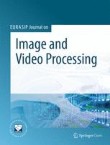Simulation of ultrasound nonlinear propagation on GPU using a generalized angular spectrum method
Acoustic simulation has always played an important role in the development of new ultrasound imaging techniques. In nonlinear ultrasound imaging particularly, the simulators are accurate but time-consuming, be...
